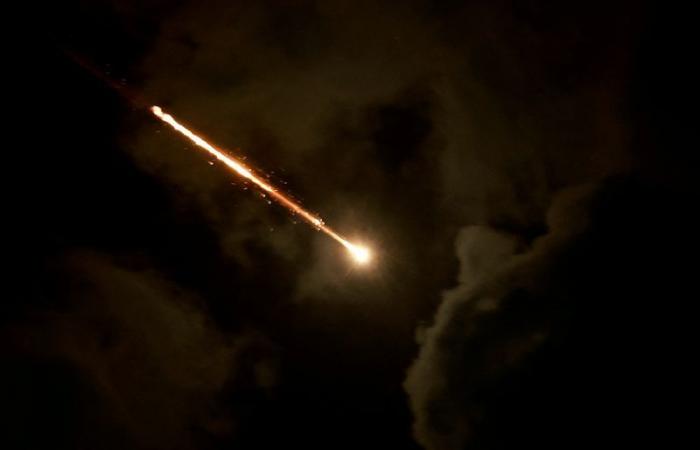Iran’s missile barrage this month against Israel, following a similar large-scale attack in April, shows the value, as well as the shortcomings, of the missile defenses of the United States and its allies under of a possible Indo-Pacific conflict with China, analysts believe.
Although the differences between the two scenarios limit what can be learned, the approximately 400 missiles of various types that Iran has fired at Israel this year give the United States and China an idea of what works and what doesn’t work.
For Washington, the main lesson from the October 1 Iranian attacks – the largest sample yet of ballistic missiles fired against modern defenses – may be that Beijing’s missiles would be more difficult to intercept than Iran’s and that response capability would be necessary to deter a massive attack, said Collin Koh of the S. Rajaratnam School of International Studies in Singapore.
“If we look purely from the point of view of deterrence, we can no longer hope for deterrence by denial, that is to say the hope that effective defenses can mitigate the effectiveness of missile strikes ” said Mr Koh. “Deterrence through punishment may become normative in the future.
There is no immediate threat of missile conflict in the Indo-Pacific region. The distances, of the order of thousands of kilometers, are greater than in the Middle East. China’s weapons are more sophisticated, including maneuverable warheads and precision guidance. Finally, target areas are scattered across the region, making a massive attack more difficult.
The United States has developed and deployed new weapons in the region this year to counter China, including the AIM-174B air-to-air missile and the ground-based Typhon missile battery in the Philippines, which can launch SM-6 missiles and Tomahawk.
The U.S. Indo-Pacific Command and China’s Defense Ministry did not immediately respond to requests for comment.
CHINESE MISSILES HAVE LONGER RANGE, BUT ARE LESS ACCURATE
On the other hand, simply being better informed about the performance of offensive and defensive systems after Iranian missile launches – many of which were intercepted – can reduce the risk of conflict, said Ankit Panda, of the Carnegie Endowment for International Peace, based in the United States.
“Any military force planning long-range missile strikes will need to take into account the possible effects of missile defenses,” Panda said. “Of course, if it is unclear how well a given missile defense system can work, this could lead to massive escalation.
Israel’s layered air and missile defenses – from the long-range Arrow systems to the Iron Dome shield intended to deal with slower, less complex threats – are tailored to the threats the country faces: guided ballistic missiles from from powers such as Iran mixed with unguided rockets launched just beyond Israel’s borders.
The situation is much different in the Indo-Pacific region for the United States and its allies, which use the sea-based Patriot, THAAD and Aegis systems from Lockheed Martin and Raytheon for missile defense.
According to the Center for Strategic and International Studies’ Missile Defense Project, the accuracy of the DF-26, China’s largest conventional intermediate-range ballistic missile, is estimated at 150 m (500 feet). The DF-21 has a shorter range, although some variants have an accuracy of 50 m.
Both can hit most U.S. and allied targets in the region. The DF-26 can reach Guam, where there are important US military installations. The Pentagon has estimated that China could possess several hundred of these missiles.
On the other hand, Iranian missiles such as the Fattah-1 are theoretically more precise – within a few dozen meters – but their range is much shorter. The number of these newer missiles is not public, but U.S. Air Force Gen. Kenneth McKenzie told Congress last year that Iran has more than 3,000 ballistic missiles of all kinds. types.
According to Malcolm Davis, a senior analyst at the Australian Strategic Policy Institute, China’s capabilities exceed Iran’s in other areas. Missile attacks would most likely be coordinated with anti-satellite strikes and cyberwarfare, both designed to complicate defense.
“Western (integrated air and missile defense) systems in the Indo-Pacific would have a much harder time countering a large Chinese missile attack, including hundreds or even thousands of missiles, than the Iranians are capable of” , Mr. Davis said.






